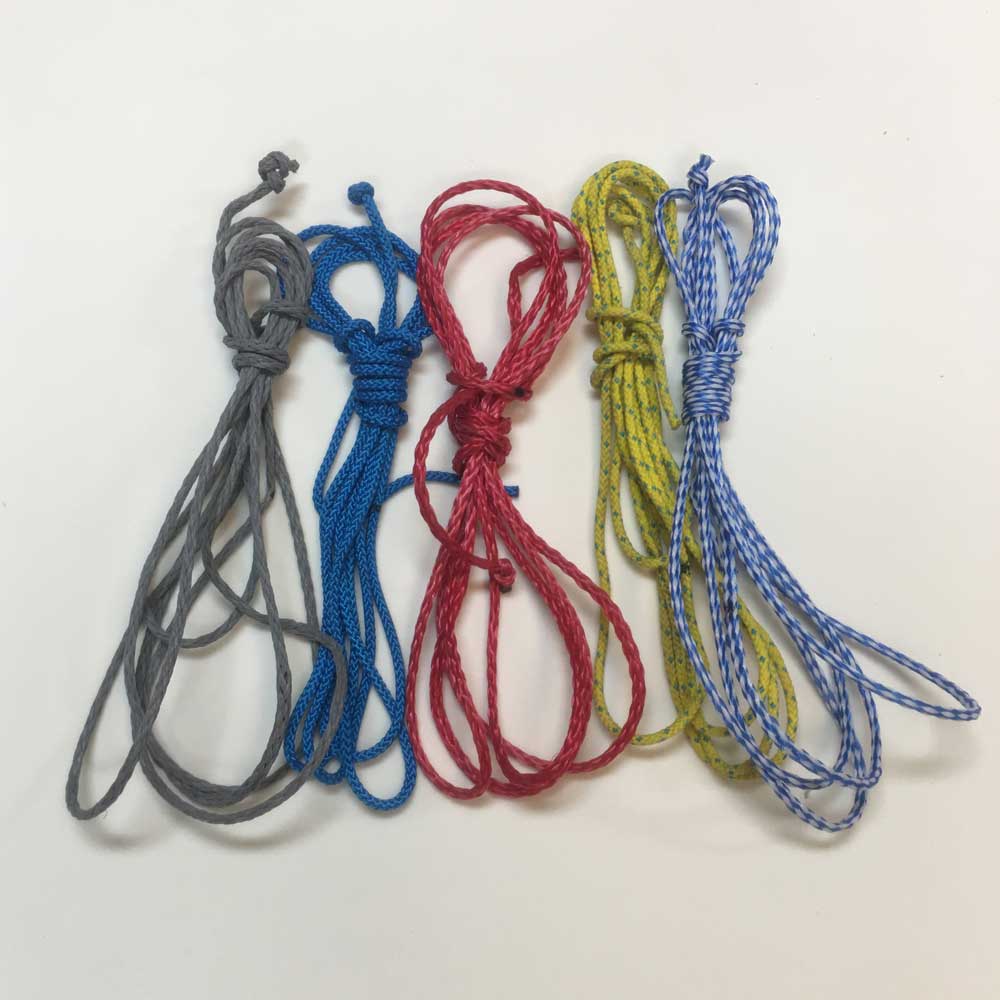When in it come to picking an Optimist bowline, your choices for a are getting ever more numerous. While it doesn’t get a lot of attention, this line is possibly the most critical piece of safety equipment in your boat, but it also happens to be dead weight.
In our mission to provide you with information regarding the technical aspects of your equipment, we’ve tested some of the options available on the market. Hopefully, by the end of this article, you will have a better understanding of what makes a proper bowline and what is worth avoiding.
The first topic we need to cover is what makes a class legal Optimist Bowline. IODA rule, section 4.3(b) specifies bowline requirements:

(b) A painter of a single piece of buoyant rope, not less than 5 mm diameter and not less than 8 m long securely fastened to the mast thwart or mast step. (see also 3.2.6.1).
In simple words, a bowline must be 5mm in diameter, must be at least 8 meters long and must float. The rule does not say anything about weight, type of line, line condition, or strength.
Strength, and more
If you talk to any racer, they will tell you that you want the lightest line possible. You also want one that doesn’t absorb much water. Simple, right? Unfortunately, the solution is not so simple. The bowline in the Optimist can see a pretty high load when you consider that it is prevalent to see 5-10 Optimists in a towline. Just having a cheap, lightweight floating line may not be a great idea.
Ideally, you want a line that is not only light and doesn’t absorb water but is also strong enough not to break, and elastic enough to absorb the initial loads when starting a tow. Imagine being the last team off the dock, and on the way to the racecourse, which is a ½ mile tow, the coach decides to tow a little faster than usual. Ultimately, someone’s bowline snaps. There’s no protest or recourse for that.
In a simple review, we looked at three readily available different types of lines. All three examples meet the class requirements but have distinct advantages and disadvantages. We ran each line through three tests.
During the tests, we found that our hollow braid polypro lines retained the least amount of water, with the MCL Yellow double braid coming in next, and the braided Polypro retaining the most water.
The first test was for the racers. After soaking each line in the water for an hour, you can tell which ones absorb water.

Our next tests were for safety.
We put all the lines outside for over a month and then ran a ballistic test to see how strong each line was.
If you would like to see a video of our testing procedure, you can watch it at left:
In our Working-Breaking strength chart you can see the results of our testing.

The last test was for elongation. You want a stretchy bowline because you want the line to stretch at first, which significantly reduces the loads transferred to the mast step of the hull.

In conclusion, we found the best overall performer to be the double braid polypropylene line in yellow. It scored well on water retention, had nearly the highest score on our break test, and had reasonable elongation.

The lowest performer was the braided polypropylene line in blue. The grey hollow braid Polypro was a middle of the pack performer but had the most moderate elongation. Red and Blue/White hollow braid Polypro lines scored the best on water retention, only retaining 1.6 oz of water; however, there was a massive disparity between the breaking strengths. Red receives our highest score at 557 pounds, but the Blue/White receives our lowest score at 455 pounds.
We hope you enjoyed learning a little more about Optimist bowlines, and the differences between braids and strengths. As always, McLaughlin is here to help with technical information and support,as well as our Optimist Cordage category in our store.
Stay safe and sail fast!
Every sailor wants to have an edge when it comes time to compete, and now you know how to get it.